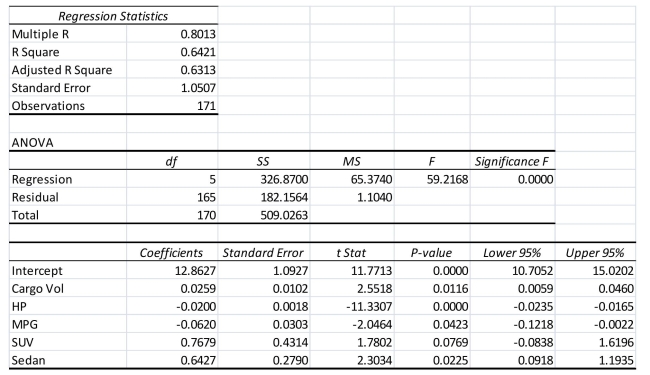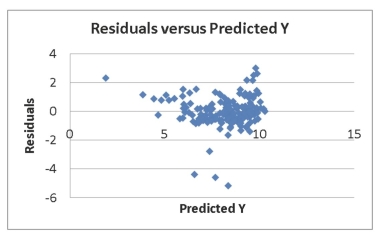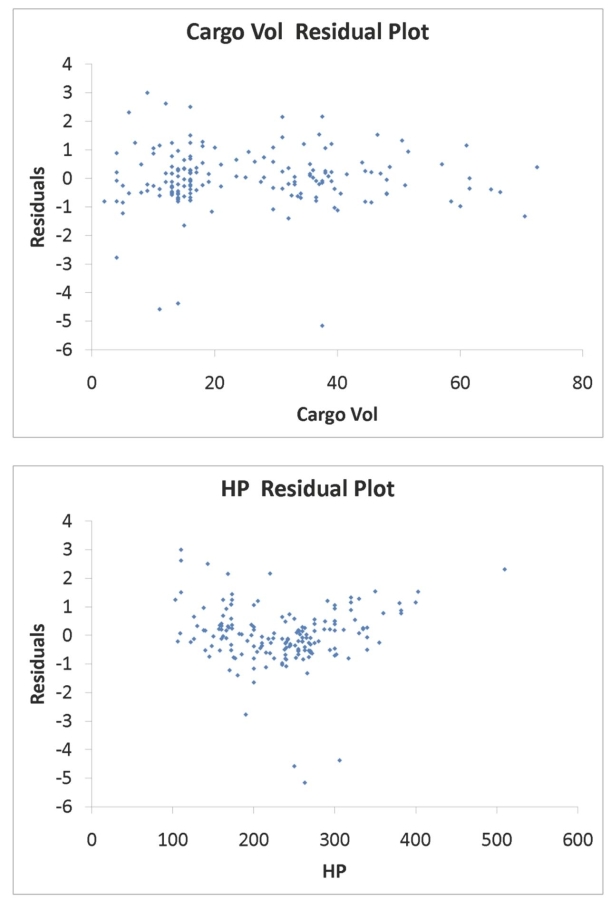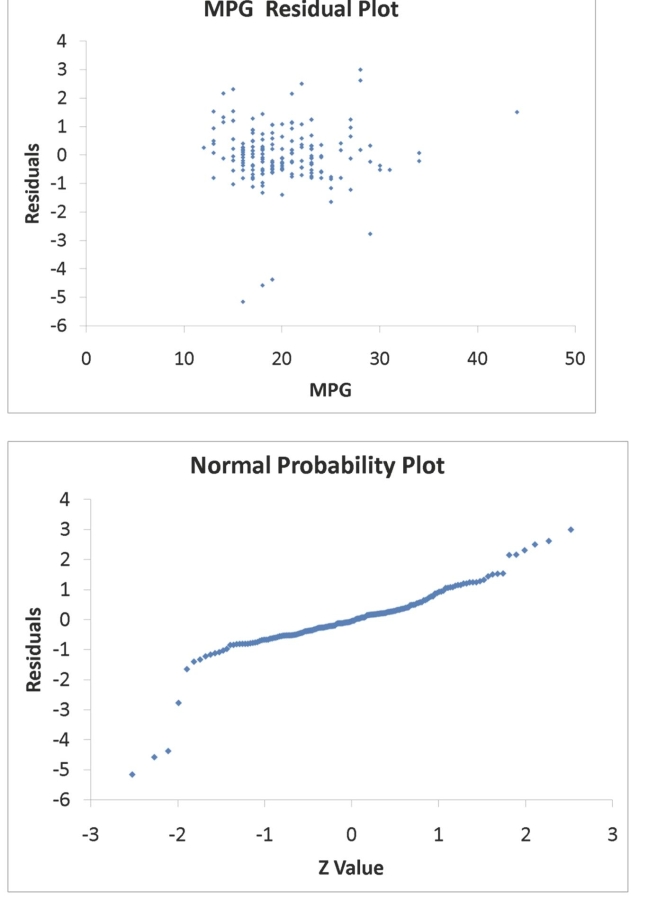SCENARIO 18-9 What are the factors that determine the acceleration time (in sec.) from 0 to 60 miles per hour of a car? Data on the following variables for 171 different vehicle models were collected: Accel Time: Acceleration time in sec. Cargo Vol: Cargo volume in cu.ft. HP: Horsepower MPG: Miles per gallon SUV: 1 if the vehicle model is an SUV with Coupe as the base when SUV and Sedan are both 0 Sedan: 1 if the vehicle model is a sedan with Coupe as the base when SUV and Sedan are both 0 The regression results using acceleration time as the dependent variable and the remaining variables as the independent variables are presented below. SCENARIO 18-9 cont.  The various residual plots are as shown below.
The various residual plots are as shown below.  SCENARIO 18-9 cont.
SCENARIO 18-9 cont.  SCENARIO 18-9 cont.
SCENARIO 18-9 cont.  The coefficient of partial determination
The coefficient of partial determination  of each of the 5 predictors are, respectively, 0.0380, 0.4376, 0.0248, 0.0188, and 0.0312. The coefficient of multiple determination for the regression model using each of the 5 variables
of each of the 5 predictors are, respectively, 0.0380, 0.4376, 0.0248, 0.0188, and 0.0312. The coefficient of multiple determination for the regression model using each of the 5 variables  as the dependent variable and all other X variables as independent variables (
as the dependent variable and all other X variables as independent variables (  ) are, respectively, 0.7461, 0.5676, 0.6764, 0.8582, 0.6632.
) are, respectively, 0.7461, 0.5676, 0.6764, 0.8582, 0.6632.
-Referring to Scenario 18-9, what is the correct interpretation for the estimated coefficient for HP?
Definitions:
False Positives
An error in which a test incorrectly indicates the presence of a condition that is not actually there.
Type II Error
A statistical error that occurs when one fails to reject a false null hypothesis, also known as a false negative.
Difference-In-Difference
An estimator that identifies the causal effect of a treatment, like a special promotion, by comparing the periods before and after the treatment between an experimental group and a control group. The second difference is designed to remove selection bias.
Price Change
A fluctuation in the market value of goods or services.
Q19: Referring to Scenario 18-3, the net regression
Q22: Referring to Scenario 19-5, construct a p
Q27: SMED establishes ways to eliminate unnecessary housekeeping
Q52: Referring to Scenario 20-2, the return to
Q56: Which of the following disciplines is typically
Q92: Referring to Scenario 19-6, a p control
Q93: Splitting of a node might be followed
Q95: The prescriptive analytics technique in which the
Q108: Removal of uncertainty from a decision-making problem
Q129: Referring to Scenario 16-4, exponential smoothing with